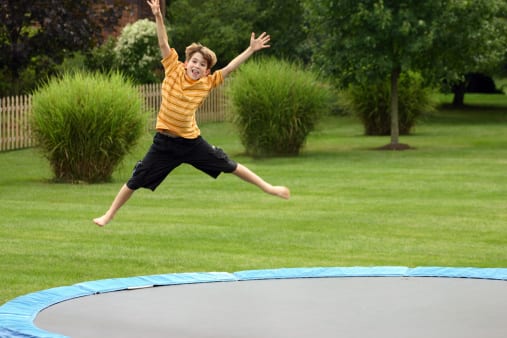 Let’s be honest, our children need time and space to regulate their bodies and unwind. For example, trying to behave for six hours at school is hard for our kids. They need breaks. And, when they get home, they need time to regulate themselves.
Let’s be honest, our children need time and space to regulate their bodies and unwind. For example, trying to behave for six hours at school is hard for our kids. They need breaks. And, when they get home, they need time to regulate themselves.
How can my child get a regulating break at school?
At school, your child either has an aide or some sort of plan that allows him to do some OT-related exercises or time outside the classroom when needed.
As your child gets older, however, they will be asked to try to remain inside the classroom for longer periods of times. Upper grades typically have more work, longer class times, and less recess periods.
By this time, hopefully your child has learned how to keep themselves inside more than outside the classroom. They will have learned how to tolerate a longer instructional day without the need for too many regulation breaks.
What about after school?
Ah…after school is the key, in my opinion.
First, my child walks home from school. This activity in itself can be a regulating experience. For example, he rides his Razor to school for regulation purposes to help prepare his body for the upcoming school day.
When my child gets home, he is allowed time to do some regulating before homework. He either jumps on his trampoline or rides his Razor.
He can also regulate his body on the day he attends the after school program.
Our children need to unwind to settle their bodies and release tension and stress they may have contained for several hours during school. Home is still the most ideal place for this occur.
What’s so important about unwinding at home?
Home is familiar. It’s their most comfortable environment because they know the space. Many of their favorite activities are right in their own home.
When we are out in the world, the way my child regulates is different. I will either ask him to regulate his body at certain times or I’ll instruct him to do it quietly and/or out of the way.
For example, since my child makes noises while he regulates, if we are out in a social situation, I will ask him to try to keep his noises quiet.
When my child is regulating at home, however, I believe he can make his noises while he runs around in the backyard or rides his Razor or jumps on the trampoline. Why not? This is his home, after all.
Temple Gradin, an autistic adult who is well known in the autism community, built her own “squeeze machine.” She would return home from a stressful day and literally climb into this machine and let it squeeze her body. The pressure the machine created helped her regulate her body and release built up stress.
Do children with autism know the difference between regulating at home or in other places?
They may not at first, but you can teach them.
We have always made it a point to talk to our child about why he needs to do something one way and in a way that may be intrusive. We have often told him he has to wait until there’s an appropriate time to go and find a place to regulate his body because we are not at home.
He has not always understood these instructions, but after years of explaining them, we feel his finally understands that there is a difference between regulating at home and out in the world.
At home, I often let my child dictate his own regulation needs with specific exercises that he can initiate on his own.
However, there are still limits. I typically won’t let him regulate for a long period of time, for example. If I notice he’s having trouble regulating his body, which doesn’t happen often, I’ll talk to him about it. I’ll suggest something else because it may be that what he’s doing isn’t working.
And, before school, when we have a real time limit – a specific time when he has to be at school – I will use a timer to make sure he only regulates for a short period of time.
Our kids need to regulate their bodies. They may need to run, ride something, bounce on something, stretch out their bodies, or even squeeze them.
Regulating is yet another part of their autistic puzzle – how they learn to control their bodies. They are not typical children. Their bodies have different needs.
And, while our kids are learning how to regulate their bodies, try to teach them why they are regulating their bodies and where it is appropriate and where it may not be appropriate.
Hopefully, your hard work now will pay off. Our kids will understand their own needs but they’ll have learned exactly when and where to satisfy their needs.
To Find Kimberly Kaplan:
www.kimberlykaplan.com
www.smashwords.com or Amazon Kindle ebook “A Parents’ Guide to Early Autism Intervention”
Twitter: @tipsautismmom





